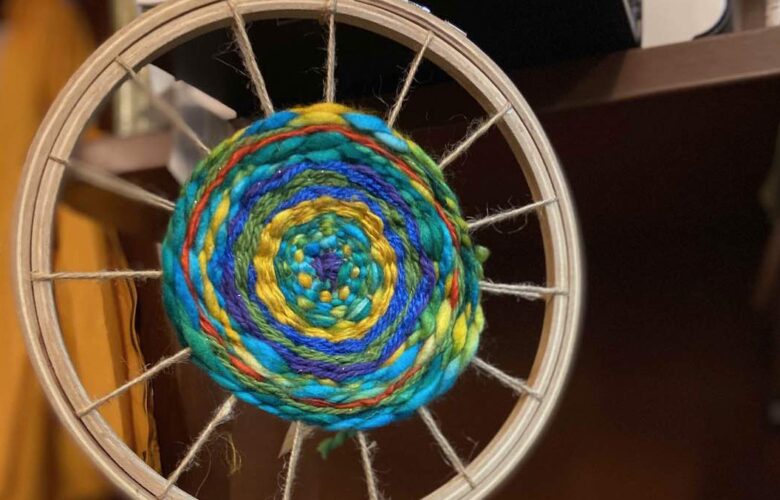This is an article I recently wrote for a fibre/spinning company called Shuttles and Needles based in Chennai.
The story in Hindu mythology goes that weaving came into this world to clothe the Gods. Nakedness & Animal instinct was replaced by civilised behaviour, and through history, fabric has played an important role in the progress of humanity.
The ancient civilisations had a clear understanding of how to approach education. The foundation for all learning was the cultivation of wonder—otherwise, there could be no impulse to explore. In the early years of a child’s education, poetry, music, and movement were developed, so that in the student’s more mature years, he would have an understanding for mathematics and philosophy. Today the education system around the world has some how lost its way. Too much time is spent in memorising facts to pass exams and attain brilliant results, with very little time for discovery and creativity. Children are taught to use technology without first teaching them how to make it. We must learn to make what we then can use. This is the way mankind will evolve and progress, this is how it happened several millions of year ago.
There is nothing more central to the evolution of humanity than “our hands”. In fact if we just pause to observe at where our hands connect to the rest of our body, we realise the proximity with which they are connected to our heart, our soul and the seat of our artistic feelings and expressions.. When we look at our hands, one can see how each is poised to strive outwards on either side and in most of our daily gestures our hands move way from the body. This reveals so much of their purpose. We embrace the world through our hands, and by its touching, exploring and manipulation, it teaches the brain new things everyday. We receive so much everyday from the world around us through our senses, but everything we process from what we receive is then channeled back outwards into the world again through the ten fingers we have on our two hands. The world would not progress by mere intellect in our head without the ability to translate it into something in our hands.
Waldorf Education is an alternative education system that precisely tries to engage the child at this level. It believes in educating the whole being of the child, and not just the head. Every element of the curriculum across grades in woven into each other and expressed through practical arts of making something. The Practical Arts often called the handwork curriculum in Waldorf schools extends right from kindergarten into Grade 11 & 12.
What is the purpose one may ask? By engaging our hands from a very early age, the person’s ‘will’ is awoken. When children have learned to harness their will, they will do wonderful things for this world as adults. Our will enables us to think beyond what is just taught in the classroom, and if we can do this for our children then we have taken the right step towards making imaginative thinkers of the future, human beings that can move into any profession and creatively work to improve life.
Children in the Waldorf schooling system all over the world learn to knit in Grade 1 which is then further mastered in Grade 2. They also start to weave and they make a pencil pouch out of their first weaving. Weaving is then further mastered again in Grade 3 with bigger looms. In grade 3 when dominance of one hand sets in, crochet is taught. Children learn to use a drop spindle and to wash and card wool and then to spin it. In grade 4 they learn cross stitch and hand embroidery as well as woodwork and in Grade 5 they learn to knit in the round with 4 needles making socks for themselves. Till Grade 7 everything in handwork is done by using hands and tools. A sewing machine is introduced only in Grade 8. All handwork projects are undertaken with utility in mind. Nothing is made by the children for show cupboard/hanging on the wall purposes. Everything made first and foremost must be something that is used either by the children or people they gift it to. They knit socks and gloves, they crochet bottle covers, pot holders, caps etc.
The gifts of nature fill the handwork classroom as only natural fibres are used – pure wool, pure cotton. Conversations are had about the sources of all these fibres, about how the plant kingdom offers us everything it has to give (natural dyes for colours), and how man has contributed to their use. Through all these conversations which start in the early grades and progress into the upper grades, changing of course with age an d learning, the children develop a sense of respect and reverence for the environment and to value and not waste these gifts.
Thus through the use of their hands, through learning to spin and weave, sew, knit and crochet, children grow up to be genuinely more social conscious human beings, there closing the gaping hole that the modern world has created in which everything comes in a box, at a click of a button, and instant gratification achieved without any clue as to the effort that goes behind making it.

